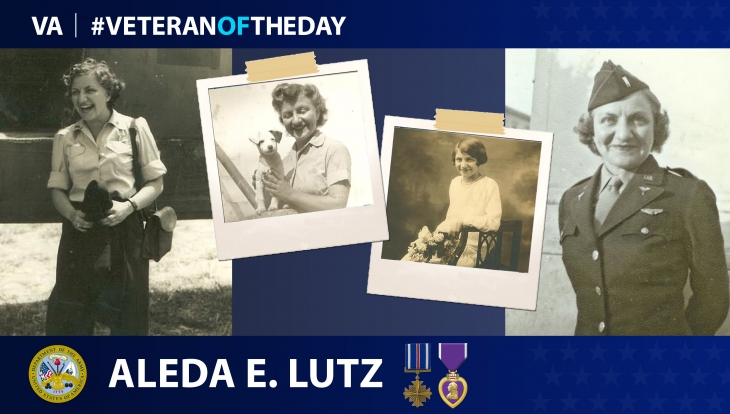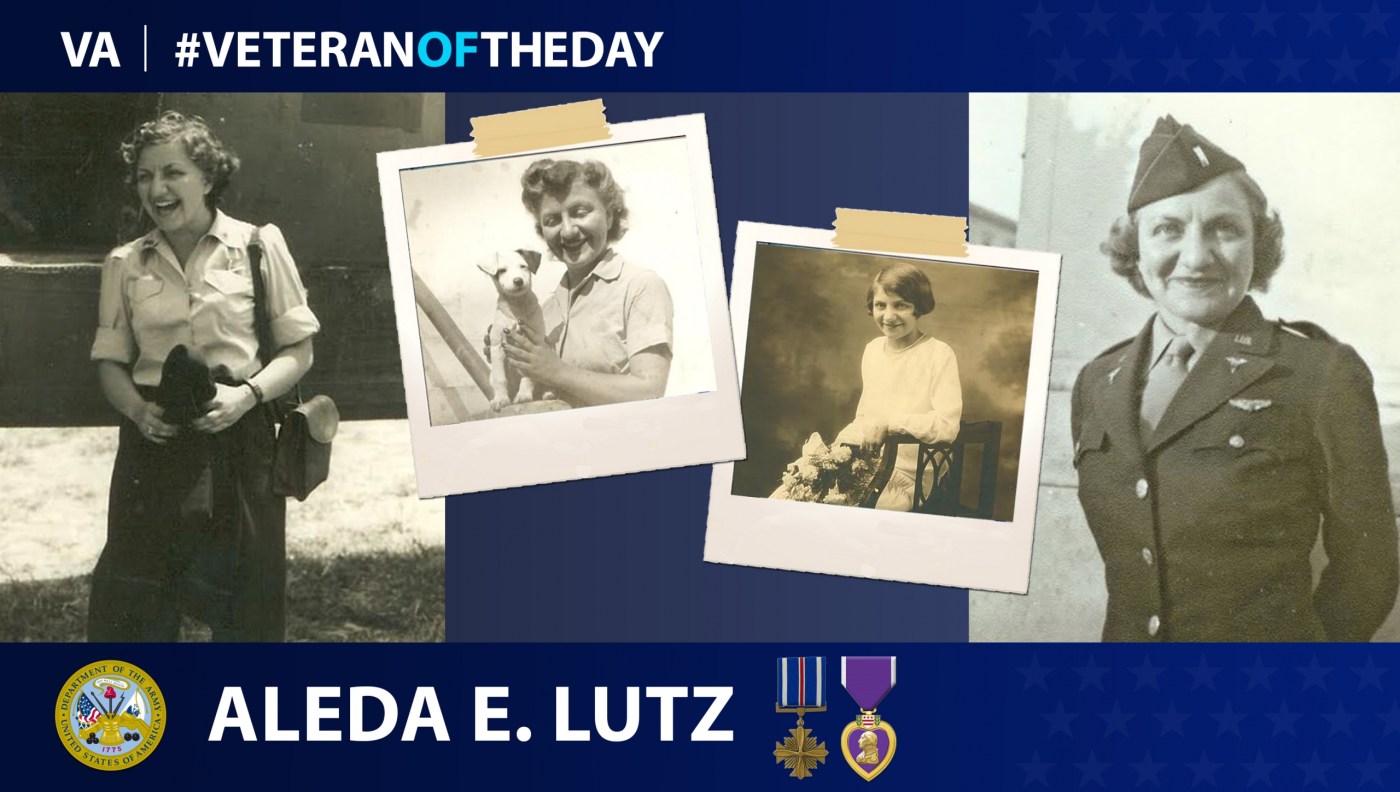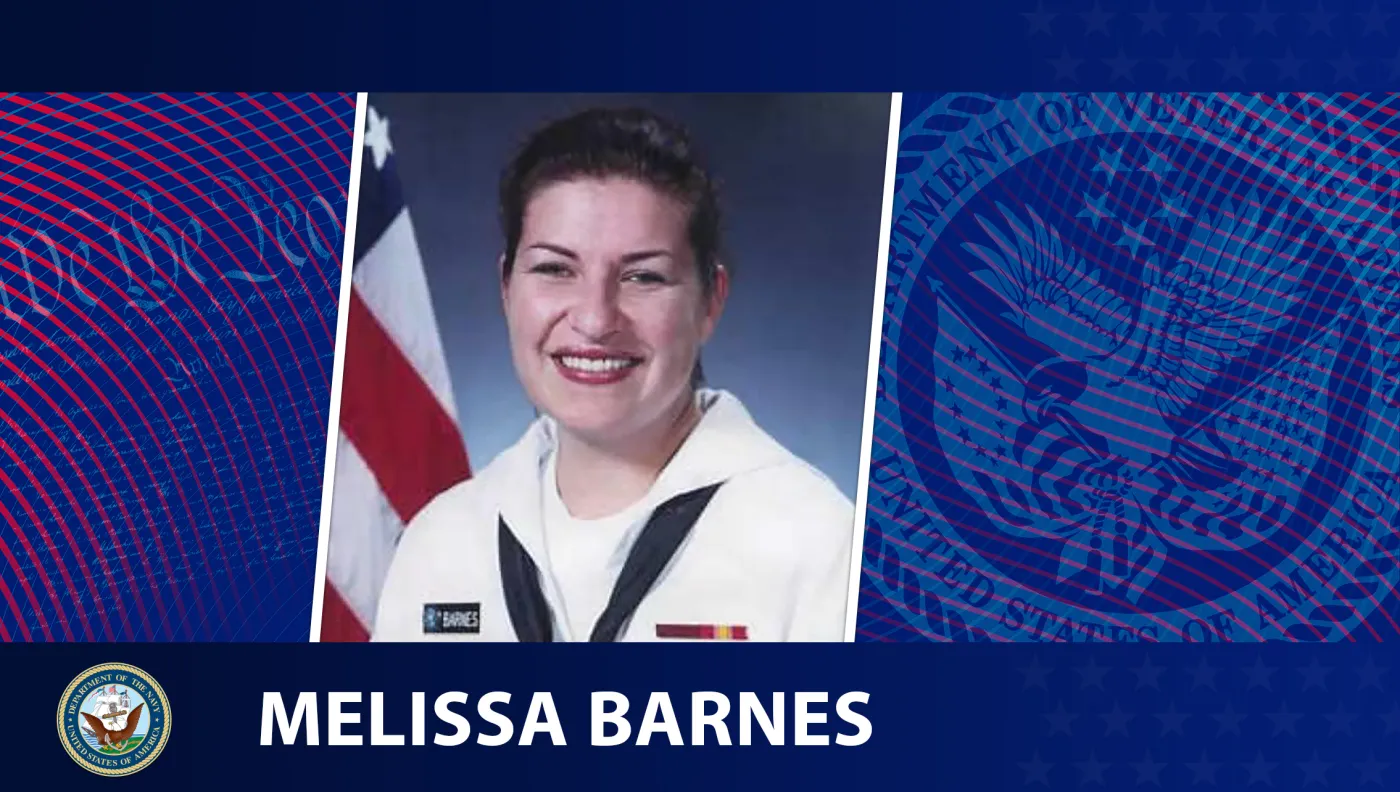
Today’s #VeteranOfTheDay is Army Veteran Aleda E. Lutz, an air evacuation nurse who died in a plane crash during World War II.
Aleda E. Lutz was born in November 1915, in Freeland, Michigan, to German immigrants Friederich Georg Lutz and Margaretha Sybilla Lutz. Lutz was the youngest of 10 children and belonged to St. John Lutheran Church-Amelith, where her family helped minister the German prisoners of war (POWs) who were at the Freeland POW Camp near her home. She grew up speaking German and English, which would later benefit her during her service in World War II.
In 1933, Lutz graduated from Saginaw Arthur Hill High School. As a student, she was a superior athlete and excelled at tennis, dancing and ice skating. She graduated from Saginaw General Hospital School of Nursing in Michigan and became a staff nurse at Saginaw General Hospital. During this time, she became an avid bowler and was an active member of the Saginaw Women’s Bowling Association.
Lutz joined the Army Nurse Corps in February 1942. Military service was prominent in the Lutz family: her brother Adam served in World War I and her brother Conrad joined the medical division during World War II. Three of her nephews also served in World War II.
In the Army Nurse Corps, Lutz commissioned as a second lieutenant. At the beginning of her service, she worked as a general duty nurse in the station hospital at Selfridge Field in Mount Clemens, Michigan. All nurses at the station hospital were asked to volunteer for active duty as air evacuation nurses. Only 2% of nurses passed the pilot physical exam, and Lutz was one of the three women who passed and became flight nurses.
In December 1943, Lutz promoted to lieutenant and transferred to the 802nd Medical Air Evacuation Transportation Squadron, where she cared for wounded troops evacuated from the battlefront. While overseas, Lutz served in several combat zones evacuating wounded forces. She completed 196 missions, evacuated over 3,500 men, and served more time in the air than any of her fellow Army nurses. Her last assignment was as a general duty nurse.
In November 1944, her medevac was transporting 15 wounded soldiers from Lyon, France, to Italy, when the aircraft crashed into the side of a mountain in St. Chaumon, France, during a violent storm. There were no survivors.
Lutz was the first recorded female killed in action during World War II. She was also the first Army nurse of World War II to receive a Distinguished Flying Cross. Lutz received a Purple Heart, an Air Medal with four oak leaf clusters, a European–African–Middle Eastern Campaign Medal and a Red Cross Medal. She earned battle stars from Tunisia, Sicily, Rome-Arno, Southern France and North Apennines.
Lutz was buried with full military honors in the Rhone American Cemetery and Memorial in Draguignan, France. She is the only woman buried there. In her memory, the Saginaw Veterans Affairs Medical Center was rededicated in her name in October 1990.
We honor her service.
Nominate a Veteran for #VeteranOfTheDay
Do you want to light up the face of a special Veteran? Have you been wondering how to tell your Veteran they are special to you? VA’s #VeteranOfTheDay social media feature is an opportunity to highlight your Veteran and his/her service.
It’s easy to nominate a Veteran. Visit our blog post about nominating to learn how to create the best submission.
Contributors
Writer: Adrienne Brookstein
Editors: Erica MacSweeney and Katherine Berman
Fact checkers: Monique Quihuis and Shiv Lamba
Graphic artist: Nicole Barto
Topics in this story
More Stories
This week’s Honoring Veterans Spotlight honors the service of Navy Veteran Melissa Barnes, who died while serving on Sept. 11, 2001.
This week’s Honoring Veterans Spotlight honors the service of Army Veteran Pamela Dorothy Donovan, who served as a nurse in Vietnam.
This week’s Honoring Veterans Spotlight honors the service of Air Force Veteran Heather Wilson, who served in the United Kingdom, Belgium and Washington, D.C.





